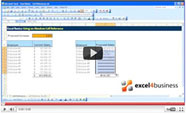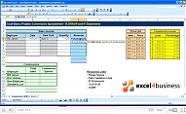Our expert consultants often develop spreadsheets containing Visual Basic macros. A macro is essentially a separate computer program written within Excel to accomplish a certain goal. Advanced Excel users write macros to extend the functionality of the software, or to automate the handling of certain repetitive tasks. As helpful macros are simply Visual Basic scripts, they are indistinguishable from potentially harmful viruses. Therefore Microsoft likes to ask users for specific permission before allowing the programs to run.
Often this takes the form of an explicit message upon opening your file. When you select to open a file, you will be asked if you want to enable active content and/or macros. This comes in either a pop-up box, or just below the formula bar at the top of the screen. However, sometimes, no message appears. This may be because Excel has remembered that you trust a certain file. However, it can also be that your computer's security settings are so high that it is just assumed you won't want a macro.
In these circumstances you need to lower your security settings. In early versions of Excel (pre-2007), you could access this by going to Tools->Macros->Security. In Excel 2010, the option is far better hidden and is best explained with reference to the above image. So you hit File (1), select Options (2), Trust Center then Trust Center Settings (3), Macro Settings (4). Then, and only then, can you select to 'Disable all Macros with Notification'. If you have never been prompted about macros, it is likely your settings were to 'Disable all Macros without Notification'.

It's worth mentioning that Excel will not retrospectively ask permission to enable macros for files that are already open. Indeed, you will need to close Excel entirely after making the adjustment in order for the change in settings to take effect.



